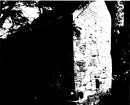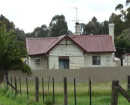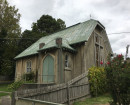Jacks Powder Magazine
OFF LA SCALA AVENUE MARIBYRNONG, MARIBYRNONG CITY
-
Add to tour
You must log in to do that.
-
Share
-
Shortlist place
You must log in to do that.
- Download report


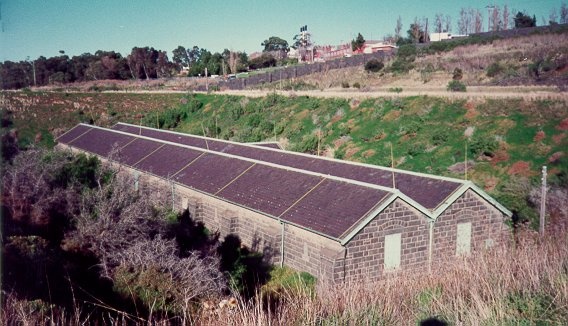
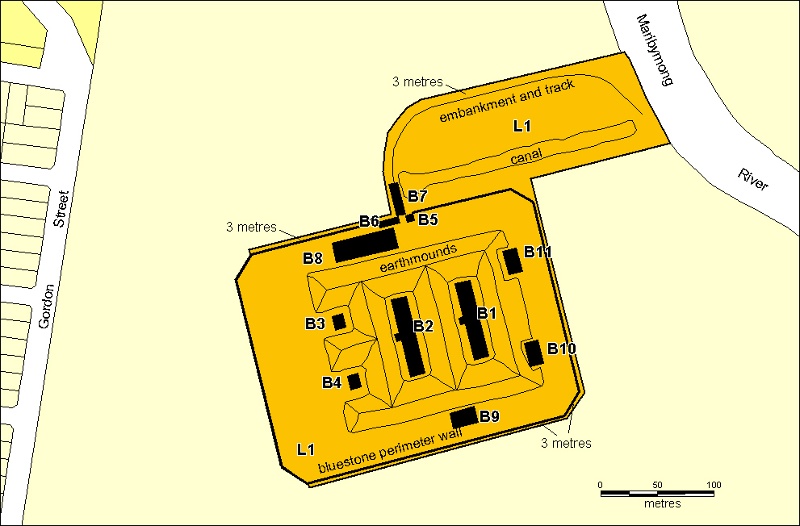
Statement of Significance
What is significant?
Jack's Magazine is a virtually intact complex of 19th century, bluestone, and gunpowder storage buildings with associated earth mound blast walls, tunnels, tramways, service buildings, loading dock and canal. The complex was designed by the Victorian Public Works Department under the supervision of William Wardell and built by contractor George Cornwell between 1876 and 1878. On Federation the complex passed to the Commonwealth which built several brick magazines between 1908 and 1921. The complex became part of the former Ammunition Factory Footscray from the 1920s.
How is it significant?
Jack's Magazine is of historical, architectural and scientific significance to the State of Victoria.
Why is it significant?
Jack's Magazine is historically significant as an extraordinary and essentially intact example of an extensive 19th century gunpowder storage facility. It is the largest gunpowder magazine complex ever constructed in Victoria. Its high degree of integrity, siting, layout, materials and form, clearly demonstrate the specialised function and process of the site for the storage of gunpowder. Its size is a direct manifestation of the importance of mining in Victoria's history. Its canal and loading dock are extremely rare in Victoria.
Jack's Magazine is historically important for its catalytic influence on the location of the bulk of Australia's nationally important munitions manufacturing capability in the western region of Melbourne.
Jack's Magazine is important as an example of architectural design by the Public Works Department under William Wardell. The consistently high quality of bluestone work throughout the magazine buildings, tunnel portals and perimeter wall constitute an extraordinary example of the stonemason's craft.
Jack's Magazine is technologically (scientifically) important for its ability to demonstrate, on the one site, changing approaches to the storage of explosives. The heavy masonry buildings are typical of early magazine design, but the extensive use of earth mound blast walls was a new development in Victorian magazine design in the 1870s. Finally, the relatively light construction of the Commonwealth magazines illustrates the contemporary approach to the problem.
-
-
Jacks Powder Magazine - Physical Description 1
Date Started 1878; Date Finished ; Storeys 1; Desc POWDER MAGAZINE; Walls BLUESTONE, SLATE , PLASTER, TIMBER; Public Works Department;
Former statement of architectural style: BLUESTONE BUILDINGJacks Powder Magazine - Usage/Former Usage
1878 ; Governmental ; NEW CHANCELS ; military ;
Jacks Powder Magazine - Physical Conditions
State of the Historic Environment survey report - Condition: Fair. See Events.
Veterans Description for Public
Jacks Powder Magazine - Veterans Description for Public
Jacks Powder Magazine (originally named Saltwater River Gunpowder Magazine), on 1 Gordon Street, was constructed in 1878 on the site of Blair's former farm, purchased for £5,000. It became known as the "Saltwater River Powder Magazine", contracts being let in 1875 to the principal contractor George Cornwall of Williamstown. Further contracts amounted to more than £25,000 including one for copper roof sheeting and lightening conductors to William Smith who also erected three brick cottages for housing magazine staff. William Tozer supplied two horse trucks and the landing cages used to transport powder.
A 400 metre canal connected an elevated loading building outside the perimeter wall with the river and gunpowder barges were drawn up the river to a loading gantry where the cargo could be transferred to tramway trucks which ran into the magazine. An alternative arrangement for unloading from a wharf on the river was also provided with a tramway running parallel to the canal.
In January 1878, it was declared open and gunpowder importers required lodging of their goods prior to payment of duty and sale. John Keays was the head keeper, having transferred from the old Footscray magazine. As well as the two double vaulted magazines, a bluestone loading building and two decanting buildings (where gunpowder was transferred from barrels to small containers) were built in the original scheme.The complex was designed by the Victorian Public Works Department under the supervision of William Wardell and built by contractor George Cornwell. With Federation in 1901, the complex passed to the Commonwealth which built several brick magazines between 1908 and 1921.
During the Second World War, the magazine became the "Ammunition Depot, Maribyrnong" but was popularly known as Jacks Magazine after the keeper from the 1920s, Wally Jack. Further brick stores were built outside the blast walls on the east side and near the entrance during the Second World War.Today the complex is virtually intact, with 19th century, bluestone, and gunpowder storage buildings, associated earth mound blast walls, tunnels, tramways, service buildings, loading dock and canal. In the 1920s, the complex became part of the former Ammunition Factory Footscray.
-
-
-
-
-
PIPEMAKERS PARK COMPLEX
 Victorian Heritage Register H1503
Victorian Heritage Register H1503 -
JACK'S MAGAZINE
 Victorian Heritage Register H1154
Victorian Heritage Register H1154 -
HUME PIPEWORKS
 Victorian Heritage Inventory
Victorian Heritage Inventory
-
177 Fenwick Street
 Yarra City
Yarra City -
19 Cambridge Street
 Yarra City
Yarra City -
2 Derby Street
 Yarra City
Yarra City
-
-







